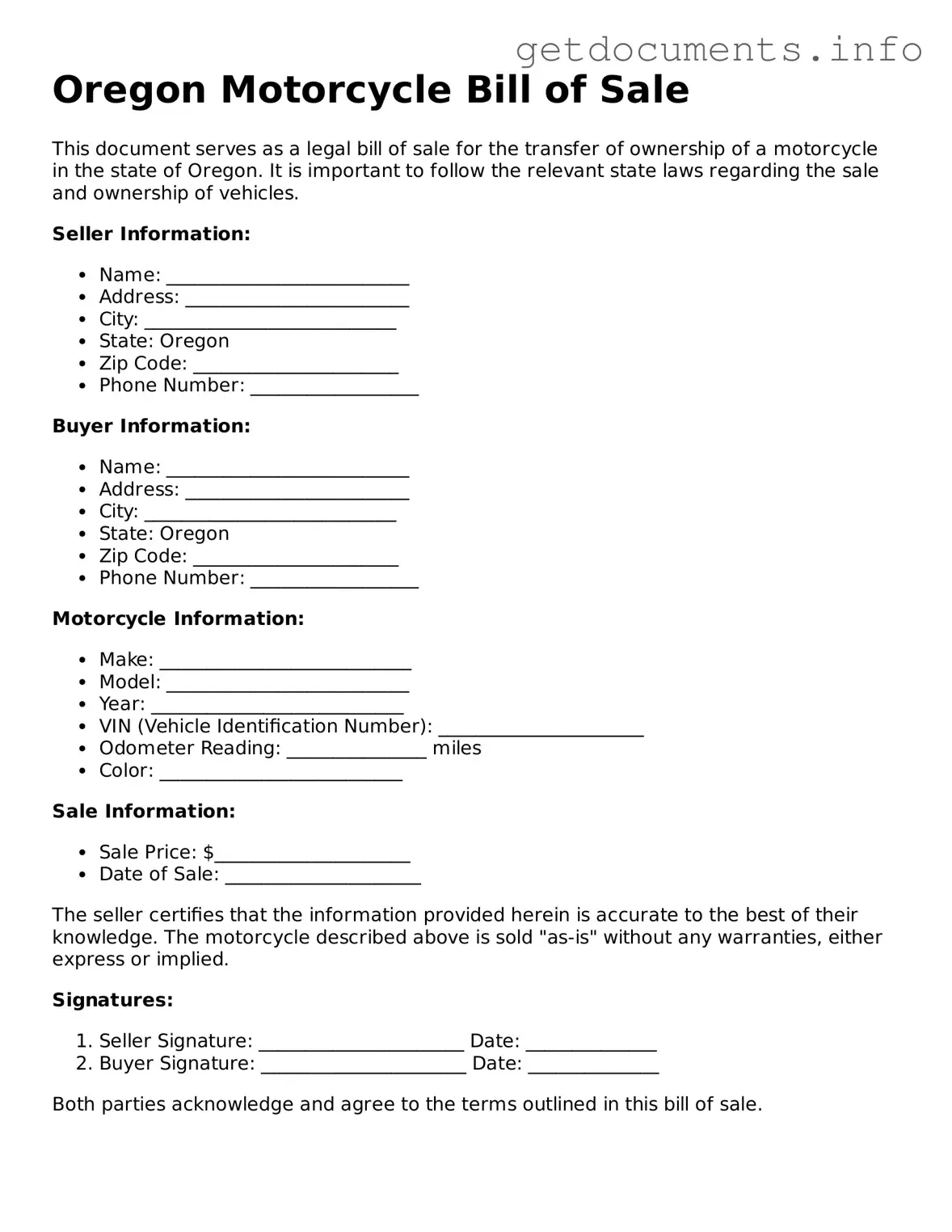Free Motorcycle Bill of Sale Template for Oregon
The Oregon Motorcycle Bill of Sale form is a legal document that records the sale of a motorcycle between a buyer and a seller. This form serves as proof of ownership transfer and includes important details about the motorcycle, such as its make, model, and Vehicle Identification Number (VIN). To ensure a smooth transaction, it is essential to fill out the form accurately; click the button below to get started.
Access Motorcycle Bill of Sale Editor
